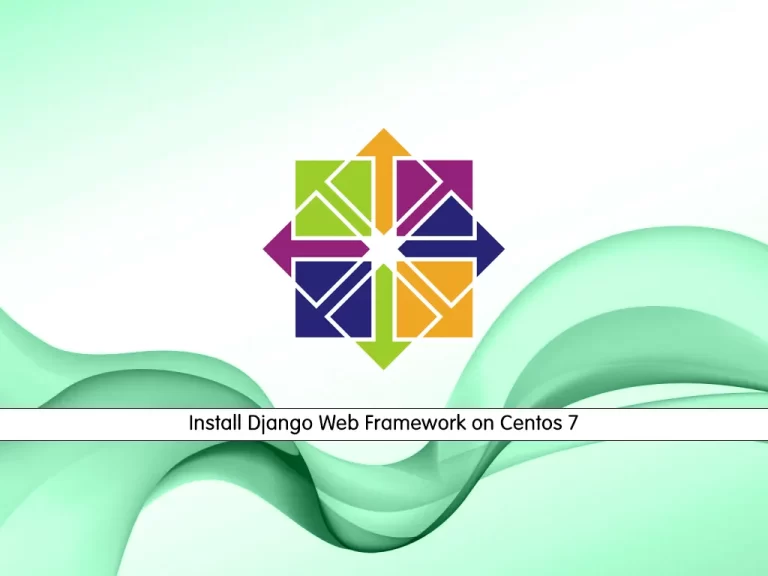Share your love
How To Install Django on Centos 7

In this guide, we intend to teach you How To Install Django on Centos 7.
Django is a free and open-source web application framework, written in Python. A web framework is a set of components that helps you to develop websites faster and easier.
When you’re building a website, you always need a similar set of components: a way to handle user authentication (signing up, signing in, signing out), a management panel for your website, forms, a way to upload files, etc.
Luckily for you, other people long ago noticed that web developers face similar problems when building a new site, so they teamed up and created frameworks (Django being one of them) that give you ready-made components to use.
Frameworks exist to save you from having to reinvent the wheel and to help alleviate some of the overhead when you’re building a new site.
Install Django Web Framework on Centos 7
To install Django, you must log in to your server as a non-root user with sudo privileges. To do this, you can follow our guide on Initial Server Setup with Centos 7.
There are several ways to install Django on a Centos machine.
- Install from yum packages
- Install through pip
- Install through pip in a virtual environment
- Install from Git
In this guide, we will install Django with pip in a virtual environment.
Installing Django on Centos 7
As you know, Django is written in Python, so you should have Python installed on your server. Centos has Python 2 in its yum repository. To install Python 3 on your server, you can follow our guide on How To Set up Python 3.10 on Centos 7.
Install pip on your server:
sudo yum install python3-pip
Once pip is installed, you can use it to install the virtualenv package by typing:
sudo pip3 install virtualenvAt this point, you can create a virtual environment to start your new project. Create your project directory with the following command:
mkdir ~/newproject
Switch to your project directory:
cd ~/newproject
Now inside your project directory, create a virtual environment by using the below command:
virtualenv newenv
Next, you need to activate your virtual environment with the following command:
source newenv/bin/activate
Your prompt should change to reflect that you are now in your virtual environment.
In your virtual environment, use pip to install Django on your server:
pip3 install django
You can verify your Django installation on Centos 7 by running:
django-admin --version
Output
3.2.14To leave your virtual environment, you need to issue the deactivate command from anywhere on the system:
deactivateFor more information, you can visit the Django Documentation page.
Conclusion
At this point, you can Install Django on Centos 7.
Hope you enjoy using it.



